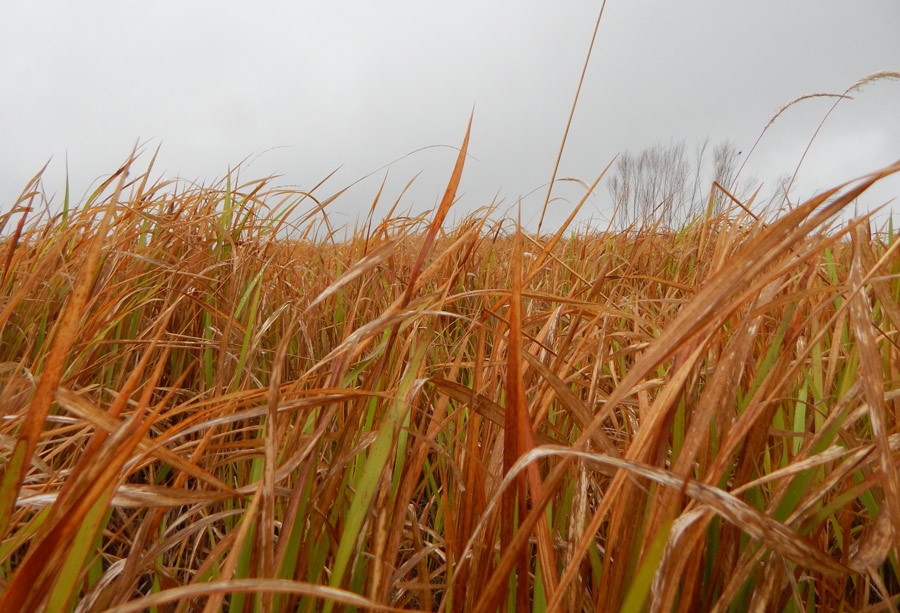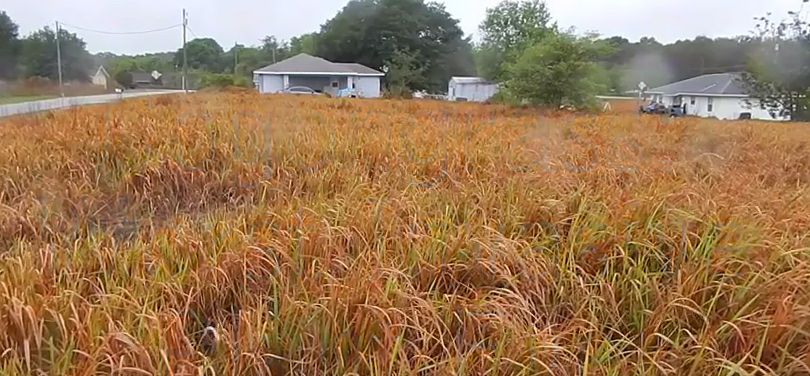Will goats eat cogongrass?
The short answer is no.
A couple of years ago I posted this video on cogongrass:
Yesterday my video received this comment:

Goats are generally known to “eat everything.” They’ve been used to control invasive plants such as kudzu and Japanese knotweed.
But cogongrass is a weed too far!
Goats And Cogongrass
According to the Delta Farm Press:
“Cogongrass has been in the United States for decades but only in the last few years was labeled a noxious weed in Mississippi. The aggressive, resilient and prolific grassy weed is considered by international botanists as the seventh worst weed in the world. It is known to infect 35 crops in 73 countries and can be found on more than 1.2 billion acres worldwide.
In the Mid-South and Southeast, cogongrass has crept into forage and pasture operations, along highway rights of ways and into pine and hardwood plantations where the weed vigorously competes for the water and nutrients needed by forage grasses, trees and wildlife.
Randy Browning, a wildlife biologist with the U.S. Wildlife Service and the Mississippi Fish and Wildlife Foundation, says now that landowners, state agencies and, in many cases, the general public have learned to recognize the plant and its dangers to agriculture and wildlife, that Mississippi is beginning to make progress on suppression of the weed in some areas and possibly even eradication in some of the lesser-infected areas.
Browning spoke March 10 to an overflow crowd at a Cogongrass Seminar in Jackson sponsored by the Mississippi Department of Agriculture and Commerce’s Bureau of Plant Industry.
“Cogongrass will displace entire native communities,” says Browning. “Cogongrass competes intensely for available light and nutrients. Landowners have found instances where the roots of the cogongrass literally grew through the roots of the trees. This stuff is tough.”
Cogongrass is also a physical barrier to seedling establishment of native plants, says Browning. It keeps other plants from germination. An example is yaupon, which is being choked out by cogongrass.”
Cogongrass might possibly offer a short-term forage value, but mature leaves are unpalatable to livestock because of high silica content and because the young shoots have sharp points.
“Even goats won’t eat cogongrass,” says Browning.”
The irony in this situation is that one of the reasons cogongrass was first imported was for animals to eat:
“It was intentionally introduced from the Philippines into Mississippi as a possible forage in 1921. Cogongrass was introduced into Florida in the 1930s and 1940s as a potential forage and for soil stabilization purposes.
However, it was revealed that cogongrass was of little economic (forage) benefit and could become a serious pest.”
Reasons Why Goats Won’t Eat Cogongrass
If goats do eat cogongrass, it can cut their tongues. As the USDA reports:
“(cogongrass) leaf margins are rough to the touch due to tiny, saw-like serrations, a common trait of other grasses as well. This rough margin can cut the tongue of a grazing animal, and due to high silica content, cogongrass is a useless forage crop.”

There are acres and acres of invasive cogongrass across the South.
And even if goats manage to get past the serrated edges and eat cogongrass – perhaps because other forage isn’t available – they’ll actually lose weight on it:
“When cogongrass was introduced, families had to grow what they ate,” Byrd said. “Most rural families had a cow for milk and butter, and they needed to feed that cow during the winter. They also had hogs, which they raised in pastures where they would root up and eat rhizomes of grasses like cogongrass.”
With its vigorous growth and sturdy root system, cogongrass looked like a good forage and was even used in some places for soil stabilization.
“Although cogongrass looks like a superb forage, we learned animals that consume cogongrass as the sole forage lose weight rather than gain weight,” Byrd said.”
Just Kill It!
Cogongrass is a horrible weed. Learn to identify it here. If it’s on your property, get rid of it. To hope that your goats eat cogongrass instead of almost anything else is a vain hope. Just kill the stuff.
You won’t be missing out on anything but trouble.


10 comments
David, in an earlier post you said “Sometimes people talk about “beneficial weeds”… but I would argue that all weeds are beneficial, in their place.” I’ll take cogongrass as an exception.
Yeah, this one is definitely out of place! Back in its Southeast Asian home, cogongrass is used for basket weaving, roof thatching and paper making… but man alive, I really hate it in my yard. It got into a patch of sweet potatoes once and the sharp rhizomes actually grew right through some of the potato roots.
Here in Korea, cogongrass was chewed as a gum substitute(young flowers), but in America, it wouldn’t work out
Hi David,
Hasn’t commented in a while but I’m still following your adventures with great interest!
It has been my experience too that goats, sheep and cows will eat cogongrass if nothing else is available. It’s also true that because it’s so low on protein, they will slowly starve on such a diet. So, if one wants to use animals to clear cogongrass, the animals need to be supplemented with some low volume high-protein feed, like flaxseed meal. Cogongrass will provide roughage.
Also, young tender shoots are way more edible and nutritious, so another trick is to always graze it when it’s young and short (you can mow it a week or two before grazing if needed). Side effect of this management technique is that cogongrass will die out eventually because it’s way more sensitive to cutting/overgrazing than FL grasses and the way it takes over is it creates dense monoculture stands and shades out the soil. It can’t do it if it’s 5″ tall or shorter. At this point whatever seeds are in the soil will have their chance. And if someone made sure that there are some bahia or bermuda seeds there they will take over. It can be done in a single year or 2 but every time you allow cogongrass to form that dense monoculture you’ll need to start over.
Leon – great to hear from you!
Thank you for the field report. That’s encouraging.
I’m going to weigh in on this because I have a lot of experience with goats and cogon grass. I’ve found goat do indeed like cogon grass. No cut-mouth issues so far. However, they aren’t going to clean up an infested field. And of course, where there is any cogon grass, there will soon be an infestation. Yes, cogon grass should be eradicated. By the same token, if you have a some you’ve pulled, give it to the goats!
Thank you, Amanda – much appreciated. Any notes on them preferring it to other grasses? My goats used to eat some plants when everything else was gone.
I would say they like it just as well as other grasses. It’s not a last-resort type thing; they like it very well. By the same token, I don’t think they can eat huge amounts of cogon grass. I will put an armload in for them, and they eat it in the pasture, but I think it would be too rough on their mouths if they were to eat nothing else. Cogon grass is also nutritionally very poor, only 7% crude protein.
Thank you, Amanda – that’s very good to know. Seems we can at least redeem a little use from the weed.
Loving your articles and videos on youtube. I didn’t know this was your website. I’m an avid viewer of your content. Learning very much and appreciating it very much. can’t believe I’m learning so much for free. Makes college seem like such a stupid waste of my time, life, and money. Loving your content! Much appreciation and gratitude your way! Thanks!
Comments are closed.